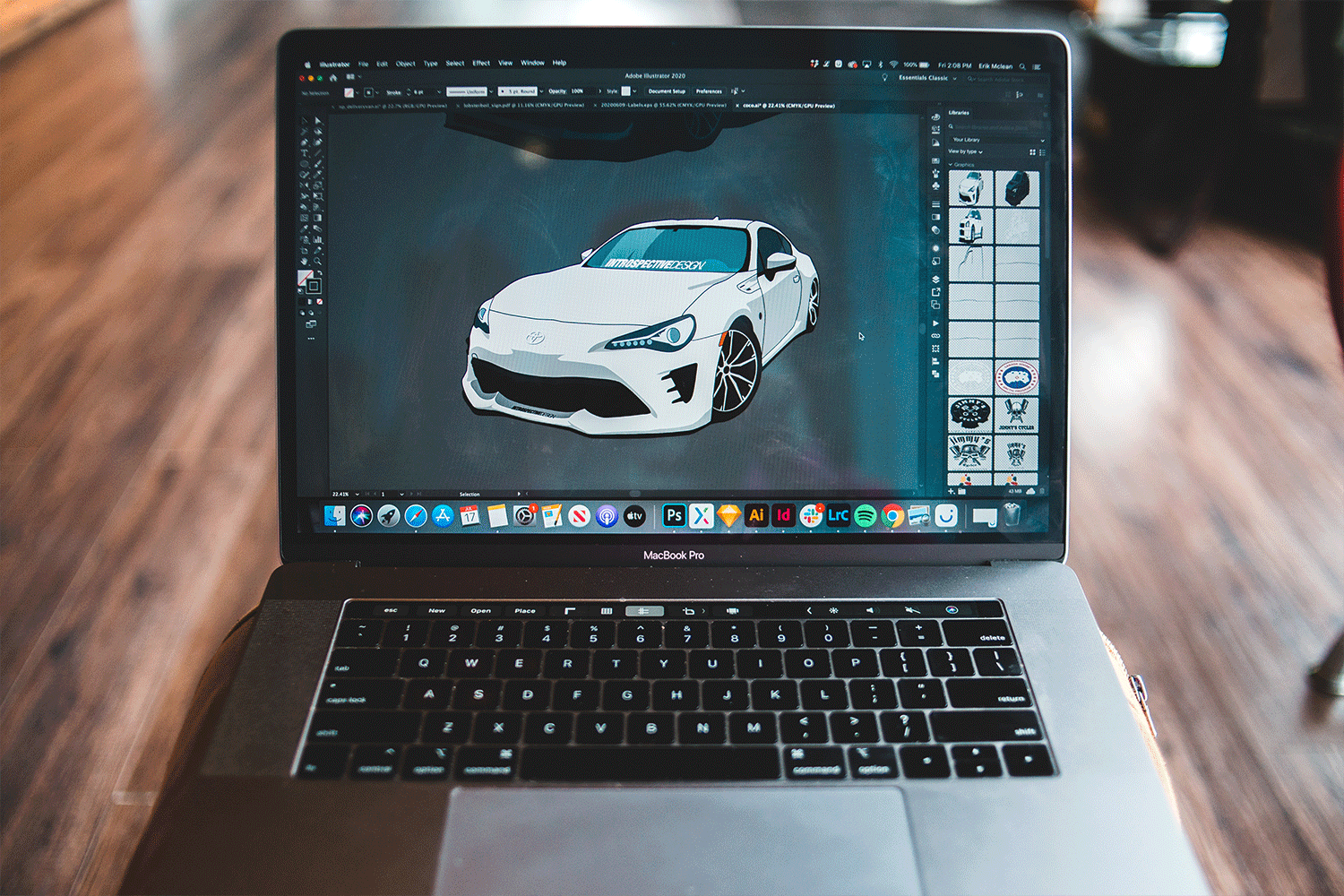Your shopping cart is empty!
What is Graphic Designs
Understanding Graphic Design

Graphic design is a field that combines creativity and technology to communicate ideas visually. It involves the strategic arrangement of images, text, and symbols to create a specific visual message or effect.
Graphic design is everywhere around us—in logos, websites, posters, packaging, billboards, magazines, books, and many more. It plays a crucial role in creating brand identities, conveying information, and evoking emotions.
Key Elements of Graphic Design
Graphic design involves several elements, including:
Color: Color has the power to evoke emotions and set the mood for a design. Designers use color theory to choose colors that create harmony and enhance the visual message.
Typography: This involves the selection and arrangement of type. Font choices, size, spacing, and alignment can greatly impact the readability and appeal of a design.
Images: Images, whether photographs, illustrations, or icons, add visual interest to a design and can convey complex ideas quickly and effectively.
Shapes: Shapes can be used to create boundaries, convey meaning, or guide the viewer's eye through a design.
Space: The use of white or negative space can enhance a design's clarity and readability.
Examples of Graphic Designs
Logo Design: This is one of the most recognizable aspects of graphic design. Companies use logos to establish their brand identity. Examples include the Apple logo, McDonald's golden arches, and Nike's swoosh.
Website Design: Graphic designers play a crucial role in creating aesthetically pleasing and user-friendly websites. They focus on layout, color schemes, typography, and images to enhance the user experience.
Packaging Design: Every product you see in a store has been packaged in a way that's meant to attract your attention. A good package design can be a major selling point. Examples include Coca-Cola's iconic bottle design or Tiffany & Co.'s distinctive blue box.
Advertising Design: This involves creating eye-catching and persuasive ads for print, digital media, and billboards. An example could be the memorable "Got Milk?" campaign.
Book Cover Design: The saying may go "don't judge a book by its cover," but a well-designed cover can certainly help sales. Chip Kidd, a famous book cover designer, has created some iconic covers such as "Jurassic Park."
Infographics: These are visual representations of data or information. They are designed to make complex information easy to understand at a glance.
Business Cards: Despite the digital age, business cards remain an important part of corporate identity. A well-designed card can leave a lasting impression.
Social Media Graphics: With the rise of social media, graphic design plays a vital role in creating engaging posts that stand out in crowded feeds. These can range from Instagram posts to YouTube thumbnails and Twitter headers.
Motion Graphics: These are graphics that are in motion. This can include animation, audio, typography, imagery, video, and other effects that are used in television and film production.
T-Shirt Designs: Graphic T-shirt designs is something that may involve photos, logos, shapes, names, quotes, and more.
Each of these examples showcases the versatility of graphic design and its importance in our daily lives. From the products we buy to the websites we visit, good design makes a difference.
AI for Innovative T-Shirt Designs
Artificial Intelligence (AI) has been transforming various industries, and the world of fashion and design is no exception. One of the key areas where AI is making a significant impact is in t-shirt design. This technology is providing designers with innovative tools and methods to create unique and compelling designs.
AI and Design Creation
AI can be programmed to generate designs based on specific inputs or parameters. For example, it can create patterns, shapes, and other design elements by analyzing a large dataset of existing designs. This can be particularly useful for creating a series of designs that follow a specific theme or style.
Personalization with AI
AI can also help in personalizing t-shirt designs. By analyzing customer data, AI can understand individual preferences and create designs tailored to each customer's taste. This level of personalization can enhance customer satisfaction and increase brand loyalty.
Automating the Design Process
Designing t-shirts can be a time-consuming process, especially when dealing with intricate designs or large orders. AI can automate parts of this process, allowing designers to focus on the creative aspects of their work. For instance, AI can handle tasks like scaling designs to different t-shirt sizes or applying color variations.
Predicting Fashion Trends
AI can analyze vast amounts of data from social media, fashion websites, and other sources to identify emerging fashion trends. Designers can use these insights to create t-shirt designs that are in line with current styles and consumer preferences.
Quality Control
AI can also be used to ensure the quality of t-shirt designs. Advanced image recognition algorithms can detect any inconsistencies or errors in the design before it goes into production, saving time and resources.
In conclusion, AI is revolutionizing the way t-shirt designs are created, personalized, and produced. As AI technology continues to evolve, we can expect even more exciting and innovative applications in the world of t-shirt design.
Adobe Adding AI Technology to Graphic Design Software
The integration of artificial intelligence (AI) in Adobe Photoshop and Illustrator has transformed the way designers work, making processes more efficient and results more impressive.
In recent years, Adobe has incorporated AI through Adobe Sensei, a technology that harnesses machine learning and artificial intelligence to automate mundane tasks and provide more advanced capabilities.
In Photoshop, AI has been used to introduce features like:
Content-Aware Fill: This uses AI to analyze the content of an image and fill selected parts with relevant content. It's incredibly useful for removing unwanted objects or filling in gaps in an image.
Select Subject: This feature uses AI to automatically select the main subject of a photo, saving users the tedious task of manually selecting it.
Neural Filters: These are a new set of filters that use AI to manipulate images in ways previously unimaginable, such as changing a person's age, expression, or even the direction of their gaze.
In Illustrator, AI has been utilized to bring about features like:
Image Trace: This allows users to convert raster images into editable vectors. The AI can recognize the shapes and lines within an image to create accurate vector representations.
Auto-Extract Colors: Adobe Sensei can automatically extract colors from an image or artwork and create a color palette, which can be a great starting point for designing.
Font Recognition: AI helps in identifying fonts used in any design or image, which is incredibly useful for designers looking to match or discover fonts.
The addition of AI in both Adobe Photoshop and Illustrator has revolutionized graphic design, making it easier for beginners to get started and helping professionals save time and produce more creative designs. On the latest beta from Adobe, you can now select a part of an image and type in what you would like to appear in the selected space. As AI continues to advance, we can expect even more innovative features in the future.


Leave a Comment